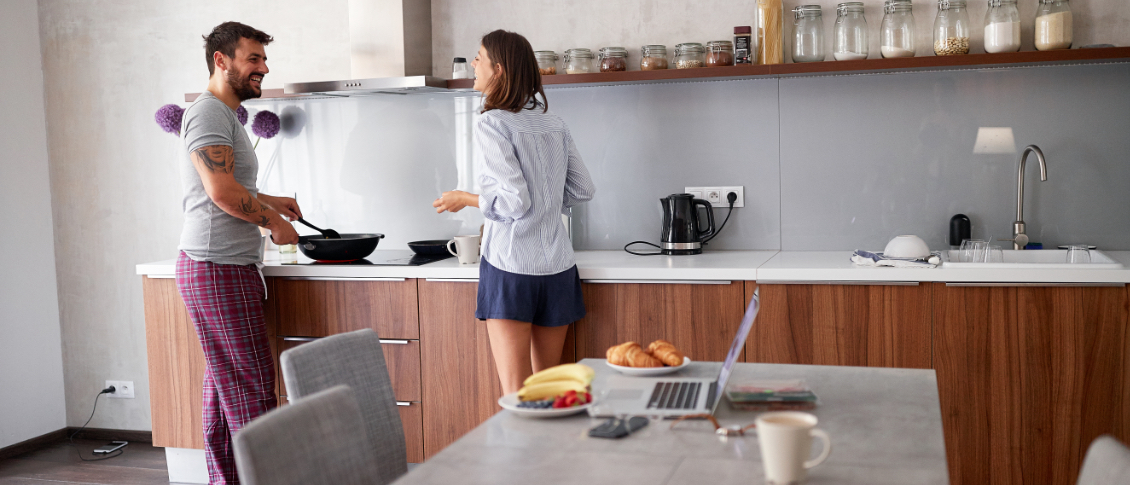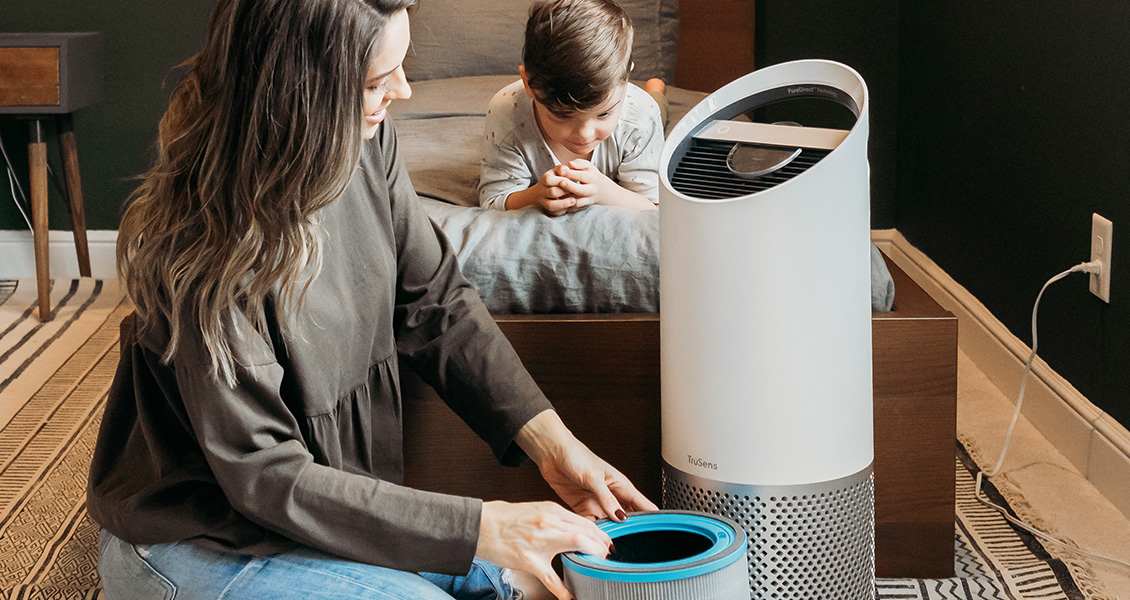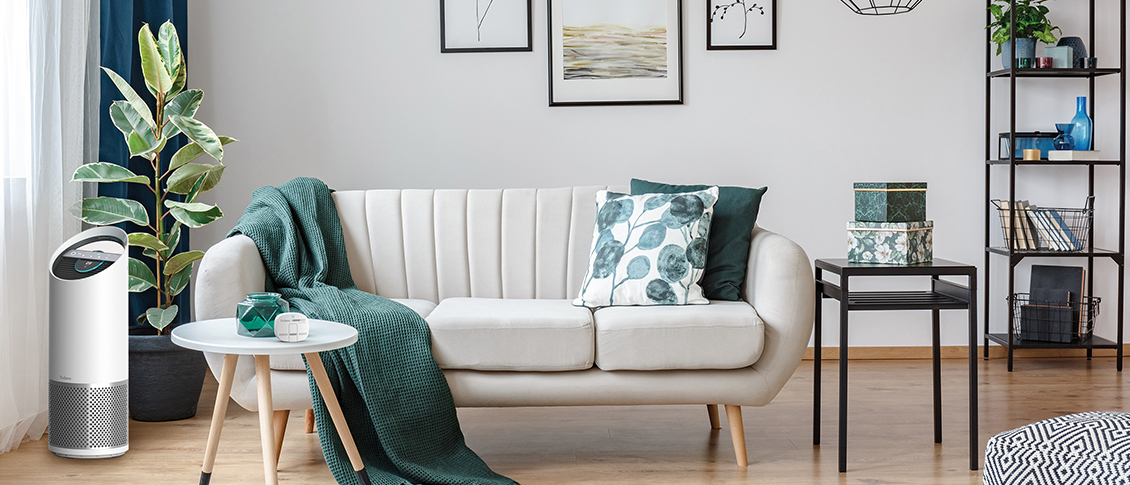How Can We Prevent Indoor Air Pollution?
01.06.2022

Most people are aware of the effect pollution in the air outside can have on our health, potentially causing issues with our lungs, nose, throat and eyes, as well as escalating pre-existing conditions such as asthma or heart disease. But it’s not just traffic pollution outside that can cause a problem. We also need to be aware of the indoor air quality of our home and place of work.
There are many things we do day-to-day that can cause indoor air pollution. However, there are a few steps we can take to minimise the pollution inside and improve indoor air quality.
Causes of Indoor Air Pollution
All sorts of things can negatively affect the air quality in your home or workplace. This includes things in your kitchen, such as gas cookers. Even cooking itself can be a pollutant, as it releases smoke and odours into the air. Dust particles and pet dander can also reduce the air quality in your home and cause problems with your breathing and irritation to your eyes, nose and throat.

The products you use to clean may cause indoor air pollution, with certain chemicals being harmful when too much is breathed in. Candles, incense, and wood fires can all release particles into the air which can reduce the air quality and irritate your respiratory system. Damp and mould can also cause a problem with air pollution and cause respiratory issues.
The most serious potential indoor air pollutant is carbon monoxide, which can be lethal if it’s undetected. This is a poisonous gas that has no smell or taste – the first symptom you might notice if you have carbon monoxide poisoning is a headache and other flu-like symptoms that don’t also come with a temperature. Carbon monoxide leaks are rare but can occur when heating and cooking appliances aren’t regularly serviced. It’s advised that you have a carbon monoxide alarm in rooms where fuel burning occurs, so you will be notified in the event of a leak.
How to Reduce Indoor Air Pollution
Use an Air Purifier
An air purifier is an efficient way of improving the air quality in a room. The right air purifier will actively reduce airborne allergens and pollutant particles in the air, helping you to breathe easier and reduce the associated health problems of poor air quality.

Our TruSens air purifiers use 360-degree filtration to capture and destroy common pollutants such as allergens, VOC gases and ultra-fine particles. Ultraviolet light destroys all the germs and viruses that build up on the filter and then circulates the clean, fresh air out into the room. We have three speciality filtration systems depending on what you need to focus on to improve the indoor air quality in your home:
- The Allergy & Flu filter will boost protection from flu, Coronavirus, and all sorts of allergies, including hay fever, by capturing and killing germs and bacteria.
- The Odour filter will help to combat cleaning and cooking odours, as well as reduce airborne VOCs, such as ammonia and formaldehyde.
- The Pet filter will specifically target pet dander, pet hair and pet odours, removing them from the air.
All of our HEPA filters meet the HEPA standard, meaning they will remove 99.97% of pollutant particles from the air, even those as small as 0.3 microns.
Combined with the TruSens indoor air quality monitor and SensorPod that monitor and test the air quality across the entire room, our air purifiers will help to improve your indoor air quality and keep you breathing clean air.
Open Windows
Opening windows can be a great way of bringing fresh air into your home and circulating out polluted air. This can be especially helpful if you have been using strong chemical cleaning products, painting, or cooking. It can also help in the winter months to reduce the risk of pollutants caused by damp and mould. Increasing the air circulation will help to remove harmful particles.
However, you will need to be strategic about when you open your windows. For example, if you live near a busy road, you might want to avoid opening windows at times when traffic is high. If you have a pollen allergy, you might want to avoid opening windows altogether during hay fever season, but especially in the morning and evening when the pollen count will be highest. In this case, an air purifier will be the best option to circulate air in your home without letting in more pollutants.
Don’t Smoke Inside
When you smoke a cigarette, the majority of the smoke goes out into the air around you, and not into your lungs. According to the NHS, this second-hand smoke contains over 4,000 toxins, irritants and other substances that can cause cancer. If you smoke inside, this smoke can linger in a room for around two to three hours, even if you open a window to attempt to clear it. The smoke can also spread to other areas inside your home, as well as seep into fabrics and other soft furnishings to be released later, sometimes with harmful effects.
If you or someone you live with smokes, they should only do so outside. You might even want to keep their coat or jacket that they wear outside to smoke in a separate cupboard, as pollutant smoke particles will be brought in from outside.
Keep Gas Appliances Maintained
To prevent the risk of carbon monoxide leaks, you should have all your gas appliances serviced and safety-checked by a qualified gas engineer every year. They will be able to identify any potential hazards regarding carbon monoxide or other gas leaks and get them fixed before they become a problem.
Use Extractor Fans
Cooking will not only create odours, but it will also release humidity, smoke and grease into the air and onto nearby surfaces. To improve indoor air quality in your kitchen, you should always use the extractor hood or extractor fan to clear out the polluted air. If you have a recirculating extractor hood, you should aim to clean the filters regularly to ensure that clean air can be recirculated into the room.
You should also ensure to always use an extractor fan in your bathroom to pull out the damp air and prevent moisture build-up and mould. An extractor fan in your bathroom can also be useful when cleaning, to clear out the chemical pollutants and odours. If you don’t have an extractor fan in your bathroom, you should open a window instead to help clear the air.
Vacuum and Dust Regularly
Regular cleaning will help to reduce indoor air pollution. Dusting will remove dust particles, but you should be sure to use a micro-fibre cloth as this will actually pick up dust rather than just pushing it into the air as a cloth duster might. You should also vacuum regularly, especially if you have pets and especially if you have carpets. Carpets will harbour more pollutants and particles than solid flooring, so it’s important to vacuum often to remove them and prevent them from getting dispersed back into the air.
Pets, such as cats and dogs, will regularly shed their fur and pet dander will increase air pollution. If you have pets, using more than one method to improve your indoor air quality will work best. Vacuuming regularly will help to reduce what ends up on the floor, preventing it from being recirculated in the air. An air purifier will work better to remove what is already in the air and stop it from getting to surfaces.
Get Rid of Damp and Mould
You should keep an eye out for areas of damp and mould build-up in a room, as the spores can cause respiratory problems. If you see a patch of mould, use mould remover to get rid of it. Most mould removers use strong chemicals to kill the spores, so you should always keep the room well ventilated when using these products to prevent further pollution.
To prevent damp from building up in the first place, you should do what you can to reduce the humidity in your home. If possible, always dry your clothes outside. If this isn’t an option, use a clothes airer rather than hanging clothes directly on the radiator, as this can cause more condensation. Open the window to help circulate the damp air, or keep the windows closed and use a dehumidifier. A dehumidifier could also be used in other areas of the house where you notice damp beginning to build up.
Use Less Polluting Cleaning Products
Chemicals used in some cleaning products can cause irritation to your respiratory system, especially when used via sprays or aerosols which can distribute more polluting particles into the air. Instead, you could switch to using cream cleaners, which won’t pollute the air as much. You could also try to find low-fragrance cleaning products, which will usually mean they use less reactive chemistry, which can be less harmful.
You could even switch to using more natural cleaning products, like white vinegar and baking soda. On certain surfaces, these can have the same cleaning qualities as bleach or other chemical-based cleaning products, getting rid of stains, odours, and dirt. However, you should always research what types of materials they can be used on first, as they could cause damage to some surfaces. For example, white vinegar can be used to clean windows but shouldn’t be used on mirrors or on wooden flooring as it can result in them losing their shine.
Leitz has a range of sleek, smart, and effective air purifiers so you can keep breathing clean air at home and at work. They work to reduce the pollutants in the air, thereby improving the indoor air quality and helping you to breathe easier.

Read more about improving indoor air quality and protecting yourself from allergens:
8 Must-Have Products to Allergy-Proof Your Home
Tips to Help Prevent Hay Fever and Manage Symptoms
How Can Air Purifiers Help People with Allergies?